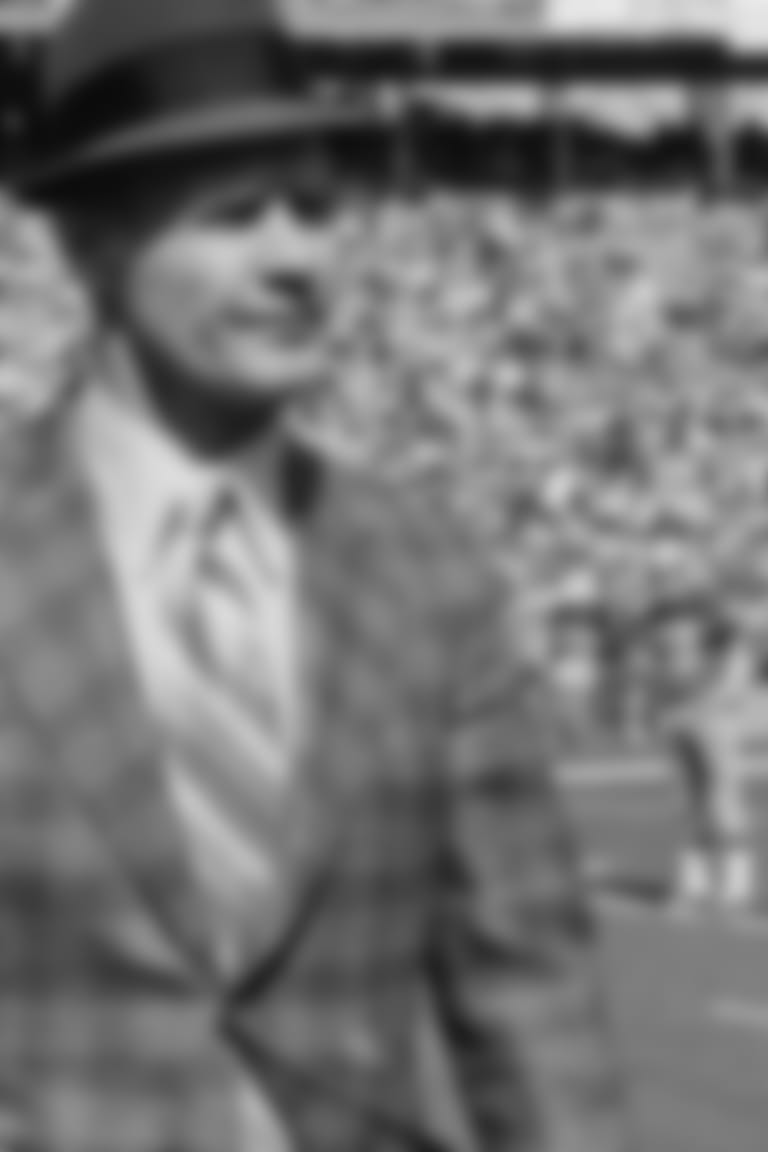Return Game: Birds, 'Boys, and Bad Blood, presented by NovaCare Rehabilitation, is the sweeping story of the Eagles and Cowboys rivalry. The early 1970s was a painful time for Eagles fans, but they knew better days were ahead – how couldn't they be?!
Tom Landry was coaching the 'Boys and they were really, really good. After winning the franchise's first Super Bowl in 1972, the Eagles took their best shot in a memorable 1973 showdown.
By 1976, something needed to be done to shake up the team. A college coach from UCLA was just the change-maker the Birds had been waiting for – but it wasn't going to be easy.
INTRODUCTION
VINCE PAPALE: They never perceived us as being that big rivalry. We just hated the Cowboys for some reason.
CHARLIE WATERS: Pretty much had the whole time we were with the Cowboys. Everybody hated us. Philadelphia felt exactly that. They understood that, and they fought like hell to beat us.
DICK VERMEIL: If you were going to be successful in our conference, you better find a way to be the Cowboys.
RAY DIDINGER: There was a dismissiveness about the way they treated the Eagles. They just kind of slapped the Eagles around.
RON JAWORSKI: The city was so charged up. Almost getting emotional, I think about it. It was one of those moments where you know, we're gonna do something special.
ROB ELLIS: Hello and welcome to Return Game: Birds, 'Boys, and Bad Blood presented by NovaCare Rehabilitation. We are in the 1970s now. A decade that lives in infamy for many Eagles die-hards thanks to a mix of memories, legendary football, and a Disney movie.
ROB ELLIS: As a fan, having to relive some of these years is like a gut punch! I want to fast forward to the middle of this decade when our fortunes finally and slowly started to change.
DERRICK GUNN: Not so fast. Not that I like to hit a guy when he's down, but the Cowboys beat the Eagles 11 straight times between 1967 and '72 and nine straight times between 1974 and '78.
ROB ELLIS: Ouch! History is the worst.
COWBOYS TAKE COMMAND OF THE SERIES
DERRICK GUNN: Being on a team that year in and year out was being trampled by Dallas is one of the memories that sticks with Mike Evans.
MIKE EVANS: The six years that I was there, we played the Cowboys twice a year. So (we played) 12 times in the six years that I was there. And we never beat them.
ROB ELLIS: Evans was starting center for the Eagles from 1968 to 1973.
MIKE EVANS: So that was an added upset, if you will, that we couldn't get past them. It became a big rivalry at that time and even more so after my playing days were over because they would (win) most of the time until Dick Vermeil got there.
ROB ELLIS: Yes, Coach Dick Vermeil, the man who would help turn the Eagles' fortunes around, but we have a few more years and coaches to cover first. Steve Zabel has a quick recap of the first couple of years of the decade.
STEVE ZABEL: In 1970, I was drafted by the Eagles and Jerry Williams was my coach. In '71, he got fired after three games and Eddie Khayat took over and we really had a sensational turnaround in the last nine games. We won six, lost two, and tied one. So at the end of the year, we're really excited about our season coming.
ROB ELLIS: Then things took a turn for the Birds.
STEVE ZABEL: Khayat went from Dr. Jekyll and Mr. Hyde or Mr. Hyde to Dr. Jekyll and to make a long story short, we went from six, seven and one in '71 to two and 12 in '72.
DERRICK GUNN: All the way down in the Lone Star state, Bob Lilly, Roger Staubach, and John Niland were becoming legends, but new players were added to help shape the team.
STEVE ZABEL: Well, Cliff (Harris) turned out to be an All-Pro safety for the Dallas Cowboys. And he and Charlie Waters were the two safeties, and they were hard-hitters and they took advantage of every non-rule that was out there ... anything they could to get away with intimidating you.
DERRICK GUNN: That's right, Cliff Harris and Charlie Waters were drafted in 1970 to a team that just couldn't make it all the way. Here's Charlie Waters.
CHARLIE WATERS: They had lost a couple of championship games against the Cleveland Browns. And they were struggling to actually win a World Championship.
DERRICK GUNN: Before 1966, when the AFL and NFL merged, there was no Super Bowl. It was just a World Championship.
CHARLIE WATERS: But we were struggling. Trying our best to get established as a championship team. Green Bay was the best team in the NFL at that time.
















